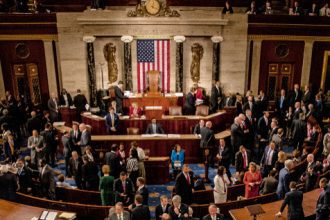Short version: India and China are set to restore direct passenger flights by late October after more than five years without nonstops. The move, confirmed by India’s Ministry of External Affairs (MEA), reopens a crucial air corridor for business, students, families, and tourists and signals a modest thaw in bilateral ties. IndiGo is first out of the gate with a daily Kolkata–Guangzhou service from October 26, 2025, with additional routes expected as regulators sign off and airlines finalize schedules.
Why This Matters Right Now: When direct flights vanished in early 2020, travellers had to thread long itineraries via hubs like Bangkok, Singapore, or Hong Kong adding cost, hassle, and hours in transit. Direct services will shorten door to door times dramatically, restore predictable cargo flow for time-sensitive goods, and revive people to people contact at scale. Officials have framed this as both practical and symbolic a step toward normal connectivity with careful guardrails.
A Five Year Pause Ends:
What paused flights? Pandemic controls first; then a prolonged freeze as border tensions made restoration politically and operationally difficult.How long was the pause? Roughly five years from March 2020 until the late October 2025 restart window. What changes now? A green light for designated carriers to operate nonstops again, subject to normal commercial and safety requirements.
Official Confirmation and What’s Caveated: According to the MEA, direct air services connecting designated points in both countries can resume “by late October,” contingent on carriers’ commercial decisions and operational readiness (aircraft, crew, slots, and ground handling). That language matters: the policy door is open, but airlines still need to launch, scale, and optimize routes based on demand signals and approvals.
Who’s Flying First? IndiGo’s Lead and What Follows: The first confirmed nonstop: IndiGo’s daily Kolkata–Guangzhou from October 26, 2025, operated by the A320neo. Bookings open October 3 via the airline’s usual channels. Industry chatter and early statements suggest more India–China city pairs may follow (for example, a potential Delhi–Guangzhou link), but those will roll out as market conditions and permissions allow.
Chinese Carriers in the Wings: On the China side, the “big three” Air China, China Eastern, and China Southern have shown intent by seeking clearances to re-enter India. Expect a staggered comeback as times on both ends.etables, slots, and bilateral entitlements settle. Mutual ramp-up helps restore balance and choice for travelle
Routes to Watch: The Likely First Wave: Kolkata ↔ Guangzhou (IndiGo) daily from Oct 26,Delhi ↔ Guangzhou mooted by IndiGo, subject to approvals,Delhi/Mumbai ↔ Shanghai/Beijing/Guangzhou potential contenders for Air India and Chinese majors as frequencies scale,These routes mirror pre-2020 patterns and today’s demand hubs for business, supply chains, and student flows. Timelines will hinge on load-factor forecasts, aircraft availability, and bilateral slot coordination.
Diplomacy in the Details: Why Late October?
The timing follows weeks of technical-level talks between civil aviation authorities covering air services terms, safety oversight, crew layovers, and handling protocols. A late October target provides a practical runway for airlines to publish fares, open sales, and market schedules while regulators finalize the revised operating framework. Impact on Travellers: Shorter Trips, Fewer Unknowns:Remember those multi-stop odysseys via Southeast Asia? Directs collapse total journey time and uncertainty. Here’s what changes:Fewer touchpoints → lower misconnect risk and simpler visa logistics for transits.Better time windows → more business friendly departures/arrivals and same-day meeting feasibility.Predictable pricing → fewer triangle fares; more transparent inventory on nonstop O&D markets. Business & Supply Chain Upside: Direct belly cargo space returning on short-haul narrow bodies (and, later, widebodies) helps e-commerce, electronics, pharma, and perishables with faster door-to-door and fewer cold-chain breaks. As timetables grow, forwarders can rebuild reliable weekly uplift plans rather than gambling on circuitous routings. Policy analysts also see the restart as a pragmatic nod to trade normalization, even as strategic competition persists. Students, Researchers, Families: Human Links Re-knit:For Indian and Chinese students and researchers, a nonstop flight often means one less barrier to fieldwork, conferences, and term starts. Families divided by the long pause gain a straightforward path for visits without red-eye layovers. That’s why officials keep emphasizing “people-to-people contact.”
What to Expect on Fares
At launch, fares may be higher than memory due to pent up demand and limited initial capacity. Historically, fares normalize as more carriers enter and frequencies rise. Watch for tactical promos around the first two months to seed demand then a gradual settling as schedules firm up for winter and spring. (Translation: if your dates are fixed, book early; if flexible, monitor as additional flights file.)
Visa & Entry: Plan the Paperwork Early: While flights unlock the physical corridor, travellers still need to nail the paperwork, Check latest visa categories and processing times on official portals. Allow buffer if you’re aligning with academic intakes or trade fairs.Confirm health/insurance requirements that airlines may verify at check-in.Regulatory rules evolve always cross check before purchasing non-refundable ancillaries.What airlines consider as they add capacity Yield vs. load factor: Early flights aim for a sustainable yield floor before chasing 90%+ loads. Aircraft assignment: A320neo/A321neo for shorter city pairs; later, widebodies for trunk routes (Delhi/Mumbai ↔ Shanghai/Beijing) if premium demand justifies Corporate contracts: Securing cornerstone corporate deals can unlock additional frequencies quickly. Schedule symmetry: Morning/evening waves aligned to business clocks at both ends.
Safety, Standards, and Bilateral Compliance
Resuming a dormant corridor requires revalidating safety oversight, maintenance arrangements, crew duty schemes, and alternate airports. The bilateral framework defines designated points and weekly seats; authorities will watch on time performance, cancellations, and consumer redress closely during ramp up.
What Could Slow Things Down?:Operational bottlenecks: Aircraft/crew availability and ground handling capacity at peak hours. Regulatory pacing: Slot adjudication and bilateral entitlements. Demand surprises: If corporate and student flows spike faster than expected, short term seat crunches can occur before airlines upgauge or add rotations.
Beyond Connectivity: A Measured Diplomatic Thaw: No one flight fixes geopolitics, but re-opening the corridor is a meaningful, measurable confidence building step. It reduces frictions for trade and travel while leaving space for hard conversations elsewhere. Think of it as turning the runway lights back on it doesn’t land the plane for you, but it shows a safe path forward.
Bottom Line: Direct India China passenger flights are back by late October, ending a five year gap. IndiGo’s Kolkata Guangzhou daily service on October 26, 2025 starts the countdown; more routes are set to follow as approvals land and demand firms. For travellers, the payoff is clear: fewer layovers, faster trips, and a simpler checklist. For businesses and families, it’s the return of a vital bridge practical, overdue, and full of possibility.
Key Facts at a Glance:Policy status: MEA confirms resumption by late October 2025.First confirmed nonstop: IndiGo Kolkata–Guangzhou from Oct 26.Chinese carriers: Air China, China Eastern, China Southern applying to return. Why it matters: Shorter trips, business revival, people-to-people contact. Context: Five-year freeze since 2020; resumption signals cautious thaw.
Conclusion: We’re watching a corridor flicker back to life. The late October restart doesn’t just shave hours off itineraries; it restores a sense of normal, with better planning horizons for companies, smoother journeys for students, and easier reunions for families. Expect an incremental ramp up one route, then another as airlines test demand and add steel where the market proves strongest. For now, set alerts, track schedules, and be ready to pounce when the fares align with your plans. The runway lights are on again.






















